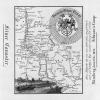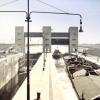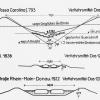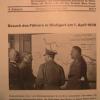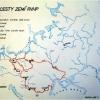Renaissance of the canals
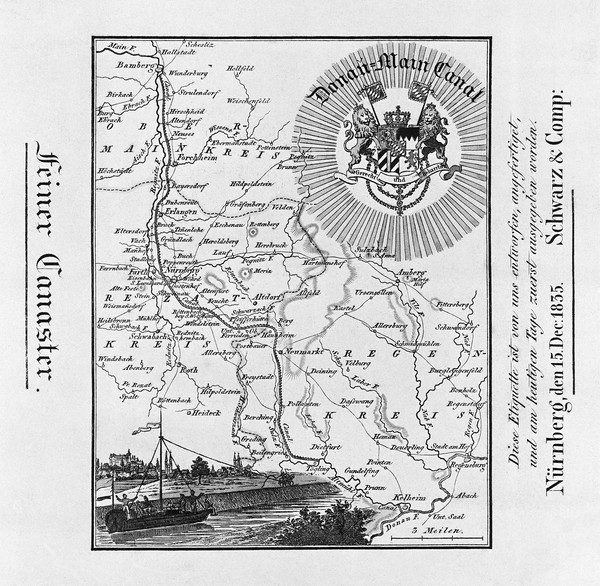
Danube- Main Canal, Map on a tobacco packet of the firm Schwarz and Co, December 15, 1835
With the rise of railways in the mid-nineteenth century, many people predicted a dim future for waterways in Europe.
However, it became clear from the 1870s on that inland water transport had survived and could compete with railways. The limited capacity of steam railways and the growing demand for low-cost, bulky goods best suited for water transport inspired the so-called "Renaissance of Canals."
Especially in Germany, states, local entrepreneurs, municipalities, and large industries pursued plans for new waterways. Rivers were improved for navigation or supplied with a running parallel specifically for transport. The establishment of the Central Association for German Shipping (Zentralverein für Binnenschiffahrt, or ZVfB) in 1873 was part of this renaissance. Through this group's efforts, the length of waterways on the recently unified German territory doubled between 1875 and 1914.
However, this expansion of waterways did not create a complete or uniform network. The improvements were mostly to individual river basins or even selected and unconnected stretches of a river. The waterways varied technologically, partly because of the natural features of the waterway and partly due to other economic and cultural ties.
International commissions on the big rivers of the Rhine and the Danube issued some standards for entire rivers, but limited their efforts to the basic parameters of the waterway itself.

How to cite this page
Jiří Janáč, 'Renaissance of the canals', Inventing Europe, http://www.inventingeurope.eu/governance/renaissance-of-the-canals
Sources
- Jiří Janáč, European Coasts of Bohemia. Negotiating the Danube-Oder-Elbe Canal in a Troubled Twentieth Century. Amsterdam: Amsterdam University Press, 2012.





